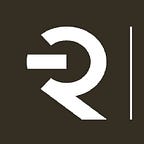Unlocking Efficiency in Healthcare: The Power of Computer-Assisted Coding (CAC) and Natural Language Processing (NLP)
Precision, speed, and accuracy are paramount in healthcare revenue cycle. With the complexity of medical coding and documentation, the industry has embraced cutting-edge technologies to streamline processes and improve patient care. In this SEO-optimized blog article, we’ll delve into the fascinating realms of Computer-Assisted Coding (CAC) and Natural Language Processing (NLP) to understand how they are revolutionizing healthcare.
The Need for Precision in Healthcare Coding
Medical coding is the backbone of healthcare billing, insurance claims, and clinical data analysis. Accurate coding ensures that healthcare providers are reimbursed correctly, patients receive proper care, and researchers can harness data for advancements in medicine.
Traditionally, medical coders manually sift through mountains of clinical documentation to assign the appropriate codes from standardized code sets like ICD-10 and CPT. This process is time-consuming, prone to errors, and can be a significant bottleneck in healthcare workflows.
Enter Computer-Assisted Coding (CAC)
Computer-Assisted Coding, or CAC, is a game-changer in the healthcare industry. It combines the power of technology and automation to assist medical coders in their vital roles. But how does it work?
CAC systems leverage rule-based algorithms and extensive databases of medical coding rules and guidelines. These systems analyze clinical documentation, including physician notes, patient records, and other healthcare documents, to suggest the most suitable codes for billing and insurance purposes. This intelligent automation dramatically improves efficiency and reduces the risk of coding errors.
Key Benefits of CAC:
- Enhanced Accuracy: CAC systems minimize the risk of human error, ensuring that the right codes are assigned, leading to fewer denials and increased revenue for healthcare providers.
- Time Savings: Coders can work more efficiently with CAC, allowing them to process a higher volume of records in less time.
- Consistency: CAC maintains coding consistency and adherence to industry standards across the board.
Expanding Horizons with Natural Language Processing (NLP)
While CAC addresses the critical task of medical coding, Natural Language Processing, or NLP, takes healthcare automation a step further. NLP is a multidisciplinary field of artificial intelligence and computational linguistics that focuses on interactions between computers and human language.
NLP systems are employed to extract structured data from unstructured text. This means they can comb through clinical narratives, patient histories, and research articles to uncover essential information.
NLP in Healthcare Revenue Cycle:
Clinical Decision Support: NLP assists clinicians by providing actionable insights from unstructured patient records, leading to more informed decisions.
- Information Retrieval: Researchers can use NLP to quickly access and analyze vast amounts of medical literature, accelerating medical advancements.
- Sentiment Analysis: NLP can help gauge patient satisfaction and sentiment, allowing healthcare providers to enhance patient experiences.
Computer-Assisted Coding (CAC) and Natural Language Processing (NLP) are transformative technologies that are reshaping the healthcare landscape. CAC optimizes the coding process, increasing accuracy and efficiency, while NLP unlocks the potential hidden within vast amounts of unstructured clinical data.
By embracing these innovations, healthcare providers can deliver better patient care, streamline operations, and contribute to advancements in the field. As the healthcare industry continues to evolve, these technologies will play an increasingly crucial role in driving progress and improving outcomes for all.
